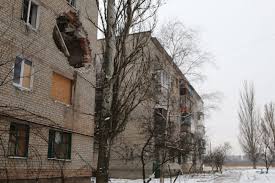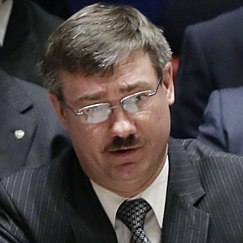Last month a major battle broke out between Russian-backed insurgents and Ukrainian forces in the town of Avdiivka in Ukraine. Alongside the return of such violence in the Donbas, Ukrainian society has changed greatly since 2014 in ways that impact the chances for conflict resolution. In this two-part commentary series, PONARS Eurasia members argue for the importance of properly understanding regional divergences in identity, public political attitudes and preferences, the sources of the escalation of violence in the Donbas, how the Yanukovych system persists under Poroshenko, and the impact of the Trump administration.
Samuel Charap, International Institute for Strategic Studies
There is no question that regional divergences in identity still matter in Ukraine. These divergences have roots in the pre-Soviet period, so it would be impossible for them to be erased within three years, as Keith Darden’s research has demonstrated.
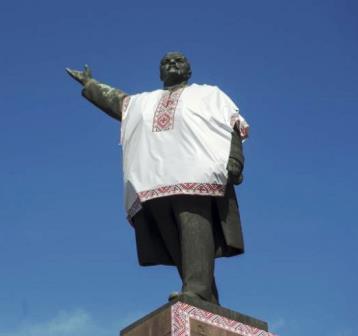
Polling conducted since the conflict began shows that Ukrainians in the South and East continue to express different preferences on key political, cultural-historical, and geopolitical questions than their compatriots in the country’s western provinces, even though the annexation of Crimea and Russia’s intervention in the Donbas have significantly reduced the appeal of integration with Russia-led institutions.
In government-controlled areas of the East and South, popular turnout in the 2014 parliamentary election was significantly lower than in the West and Center. This helped produce a parliament with a large declaratively pro-Western majority and led some to conclude that Ukrainians themselves had profoundly changed their views. However, the quantity of votes cast for such parties was approximately the same as it had been for all previous elections; what had changed was the total number of votes due to low turnout in the South and East.
There is intense speculation about the impact of the Trump presidency on Ukraine’s fate. It seems clear that the administration has not yet formulated a policy on Ukraine and does not have key personnel in place to do so, therefore it is likely we will not know for weeks, maybe months, what U.S. policy toward Ukraine will be. I am skeptical about the ability of the United States to act unilaterally on Ukraine, without coordinating its Ukraine policy with the EU. The EU, particularly Germany, has the greater role in both Ukraine’s reforms and international diplomacy vis-a-vis the conflict. If the United States goes one way and the EU goes the other, no Western policy will be successful.
Elise Giuliano, Columbia University
Given the tumultuous events experienced by Ukraine’s population since 2013 — Euromaidan, annexation of Crimea, formation of the Donetsk and Luhansk Peoples’ Republics, sustained armed conflict in eastern Ukraine — we may ask whether the regional divide that has long defined Ukrainian politics continues to inform peoples’ political attitudes.
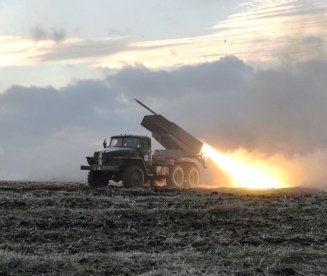
The answer is both yes and no. With regard to certain key issues, the population has come together regardless of region. On other issues, people maintain opposing attitudes, some of which correlate with region.
Yet the disagreements that do exist cannot be attributed to the various identities among Ukraine’s population — whether ethnic, cultural, or regional. Identity does not directly translate into political attitudes. Instead, people’s immediate social contexts interact with their identities to generate political attitudes. This may sound like a subtle distinction but its implications for politics are crucial. If stable cultural and regional identities determine political attitudes, popular opinion will remain relatively static unless the population itself changes. But because people and identities respond to changing contexts, public opinion evolves. Opinion polling data from Ukraine illustrate this point.
It is often argued that despite the deaths and displacement of thousands of Ukrainian citizens, one positive result of recent events is the crystallization of Ukrainian national identity in a civic, pro-European direction. On the one hand, there is truth to this claim of unity: many people across Ukraine, especially among the intellectual and political classes, welcome the opportunity to leave behind Soviet legacies of corruption, economic stagnation, and authoritarian rule in favor of individual rights, democracy, and integration with the West. Moreover, at the mass level, a majority of the population agree on a number of key issues such as support for the reintegration of the Donbas and opposing rampant corruption (and the administration’s lack of will to fight it).
On the other hand, the claim that popular opinion has become unified — especially with regard to integration with Europe — is exaggerated. It ignores the diversity of opinions that exist in Ukraine, primarily across regions, but also within them. For example, only slightly more Ukrainians (39%) favor joining NATO than oppose it (31%) and the pro-NATO portion of the population has actually declined since 2014, according to recent polls conducted by the Ukrainian firm KIIS.
 In addition, approximately only half of Ukraine’s population (48%) currently advocates joining the EU. This figure is nevertheless larger than the 43% of the population that backed EU membership before the Euromaidan, in 2013. Observers may overestimate popular support for integration with Europe if they compare older polls that include Donbas and Crimea with recent polls that exclude these regions. Since many citizens in the Donbas and Crimea opposed joining Europe, recent polls that dropped these regions seem to suggest that political attitudes have become significantly more homogeneous in recent years. However, the KIIS polls cited above exclude the non-Ukrainian controlled parts of Donbas (and Crimea), indicating that there is a trend of rising support for EU membership since 2013, albeit a slight one.
In addition, approximately only half of Ukraine’s population (48%) currently advocates joining the EU. This figure is nevertheless larger than the 43% of the population that backed EU membership before the Euromaidan, in 2013. Observers may overestimate popular support for integration with Europe if they compare older polls that include Donbas and Crimea with recent polls that exclude these regions. Since many citizens in the Donbas and Crimea opposed joining Europe, recent polls that dropped these regions seem to suggest that political attitudes have become significantly more homogeneous in recent years. However, the KIIS polls cited above exclude the non-Ukrainian controlled parts of Donbas (and Crimea), indicating that there is a trend of rising support for EU membership since 2013, albeit a slight one.
It is critical to note that a diversity of opinions with regard to European integration does not necessarily entail political polarization. People who oppose EU membership do not all support its polar opposite, i.e. membership in the Russian-led Eurasian Economic Union (EEU). In fact, KIIS data show a significant drop in support for it over the past few years, from 35% of the population in 2013 to 12% in 2016. This trend is accompanied by a corresponding rise in support (from 9% to 30%) for “joining neither the European Union nor the Customs Union.” The fact that growing numbers of Ukrainian citizens oppose EEU membership indicates that political attitudes are changing in response to the dramatic developments that have occurred since 2013. Furthermore, we would not observe growing opposition to both European and Eurasian economic associations if fixed regional and cultural identities, oriented toward either the West or Russia, directly determined political attitudes. Political attitudes evolve as peoples’ immediate experience of social and economic contexts changes. Thus, in order to understand why Ukrainian citizens agree or oppose each other on various issues, we should focus on local concerns and interests (see my policy memo on the origins of separatism) some of which may be connected to specific regional conditions, rather than to nebulous cultural and regional identities.
Mikhail Alexseev, San Diego State University
Public opinion polls suggest that despite three years of warfighting, economic shocks, dissatisfaction with political leaders, and concern over the future of Europe and the United States (i.e., the election of Donald Trump), Ukrainian society remains laudably resourceful, resilient, united in its democratic orientation. I would even say, on balance, Ukrainians are covertly optimistic. If the trends from 2013 to 2016 are any indication, Ukrainian society’s response to its challenges will remain robust.
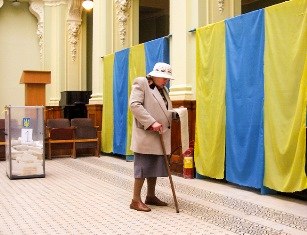
First, the sense of common civic national identity has increased. About 50% of respondents in a 2013 annual nationwide survey by the Kyiv Institute of Sociology identified themselves first and foremost as citizens of Ukraine. In mid-2015, this number was 58% and in mid-2016 it was 60%. Importantly, the largest increase in civic national self-identification occurred in Ukraine’s eastern provinces (Kharkiv, Dnipropetrovsk, and Zaporizhhya) — rising from 44% in 2013 to 56% in 2015 and to 65% in 2016 (about the same level as in Ukraine’s western and central regions, 64 and 63%, respectively). In the Ukrainian-controlled parts of the Donbas, primary identification as a Ukrainian citizen increased from about 39% in 2015 to 45% in 2016. Considerably fewer respondents in the South and East — including Donbas — identified with the former Soviet Union in 2016 (5-7 %) compared to 2013 (10-11 %), reducing regional differentiation. In the West and Center, only about 1-4% of respondents from 2013 to 2016 identified with the former USSR.
Second, preference for Western-style democracy has remained strong and, by some measures, it has increased. In Razumkov Center surveys, the number of respondents believing democracy was the best form of government climbed from 50% in 2012 to 53% in 2014. In a survey by the Institute of Sociology of the Academy of Science of Ukraine in mid-2016, this number was at 63%. Importantly, the commitment to a democratic orientation was practically uniform across Ukraine: 67% in the West, 62% in the center and in the south, and 64% in the east. Moreover, about 76% of respondents across Ukraine (rather uniformly across the four big regions) believed that the development of democracy was important for their country. Only in the Donbas were these views weaker — but still sizeable — with 46% saying democracy was the best path and 60% saying it was important.
Of course, hardship and unimaginable travails and pressures have taken their toll — particularly on divisive issues such as Donbas autonomy where regional fissures have somewhat widened. Certain long-existing regional fissures have endured, particularly concerning potential membership in the EU and NATO vs. the Russia-led Eurasian Economic Union. One fundamental indicator of public mood in Ukraine — not often reported in the news — has been quietly on the rise: hope. In one of the aforementioned surveys, Ukrainians were asked in 2013 if they felt hope when thinking about the future, about 32 of respondents said yes. In 2015, this was about 40%, and in 2016, it was about 46% (all increases were outside the margin of sampling error). These gains happened across all regions of Ukraine. Most heartening, the number of respondents in the war-torn Donbas region under Kyiv’s control who looked ahead with hope went up from just 17% in 2015 to 58% in 2016.
See Part 2 with commentary by Volodymyr Dubovyk, Serhiy Kudelia, and Yuriy Matsiyevsky.


